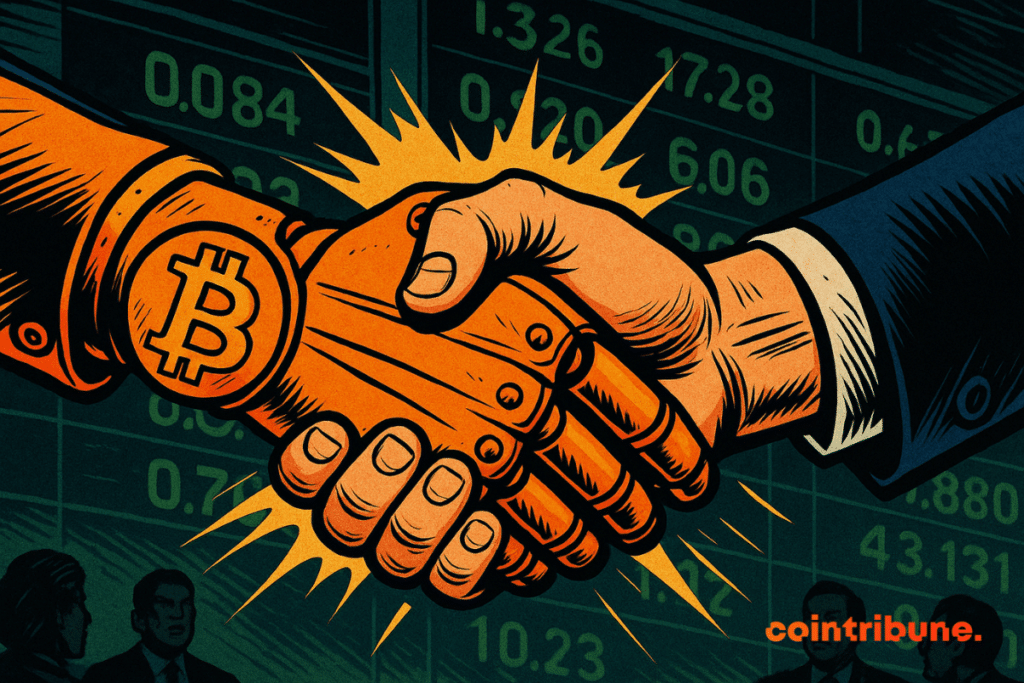12h05 ▪
4
min read ▪ by
Bitcoin’s original promise was rebellion: digital gold, a hedge against inflation, a way out of the fiat system. But if the latest Binance Research report is any indication, it may be playing a different role today: not fighting the dollar, but backing it.

In brief
Bitcoin’s correlation with the U.S. dollar has flipped positive, hitting its highest level in years at 0.25, suggesting BTC is now moving with the dollar, not against it.
Institutional flows into Bitcoin ETFs and the surge in stablecoins (now $250B+) are tying crypto markets even closer to USD liquidity.
Binance says BTC is no longer acting as a hedge, but as a macro asset aligned with risk cycles and dollar strength.
What’s happening with Bitcoin
Over the past two months, BTC’s correlation with the U.S. Dollar Index (DXY) has climbed to 0.25, its highest among all major macro assets. That’s not an overwhelming number, but it’s a shift for an asset long touted as a counterweight to dollar-based risk, according to the new research report by Binance. It suggests that Bitcoin is increasingly responding to the same forces as the dollar: macro uncertainty, higher-for-longer interest rates, and investor demand for liquidity.
This dynamic didn’t come out of nowhere. Over $2.4 billion poured into spot Bitcoin ETFs in just eight days this month, even as headlines about war and global instability rattled broader markets. These are flows from institutional allocators chasing yield, positioning, or diversification. When the dollar strengthens, they’re not pulling money out of BTC. They’re putting it in.
Meanwhile, the rapid rise of stablecoins is reinforcing the dollar’s grip on crypto markets. The U.S. Senate just passed the GENIUS Act, a stablecoin bill that could allow banks, fintechs, and even retailers to issue fully reserved, AML-compliant digital dollars. Already, total stablecoin supply has risen by 22.5% since the start of the year, passing $250 billion, with over $20 trillion in on-chain volume.
What this means for the market
Bitcoin now lives in an ecosystem that’s increasingly dollar-native. The majority of crypto trading, settlement, and even user savings happen through dollar-pegged tokens. And if Circle’s rising share price, Stripe’s USDC integrations, or JPMorgan’s blockchain-based “JPM-D” pilot are any indication, that trend is accelerating.
At the same time, Bitcoin is drifting further away from its old correlations. Its link to equities, particularly the S&P 500, has fallen to just 0.21. Its relationship with gold, another “hard asset,” is barely holding in negative territory. Instead, Bitcoin’s most consistent inverse signal now comes from U.S. Treasuries, where rising yields (and inflation fears) still trigger BTC bids. But even that effect is starting to blur.
So what are we left with? A coin that doesn’t cleanly hedge anything, but that’s still seeing inflows, adoption, and relevance. Bitcoin is no longer the outsider screaming about fiat collapse. It’s becoming a macro asset in its own right, moving with global liquidity tides and reacting to the same cues that shape FX desks and central banks.
This is a reflection of where the market is. The lines between traditional finance and crypto are blurring fast. Bitcoin, for better or worse, is now part of the machine.
Maximize your Cointribune experience with our “Read to Earn” program! For every article you read, earn points and access exclusive rewards. Sign up now and start earning benefits.
DISCLAIMER
The views, thoughts, and opinions expressed in this article belong solely to the author, and should not be taken as investment advice. Do your own research before taking any investment decisions.




